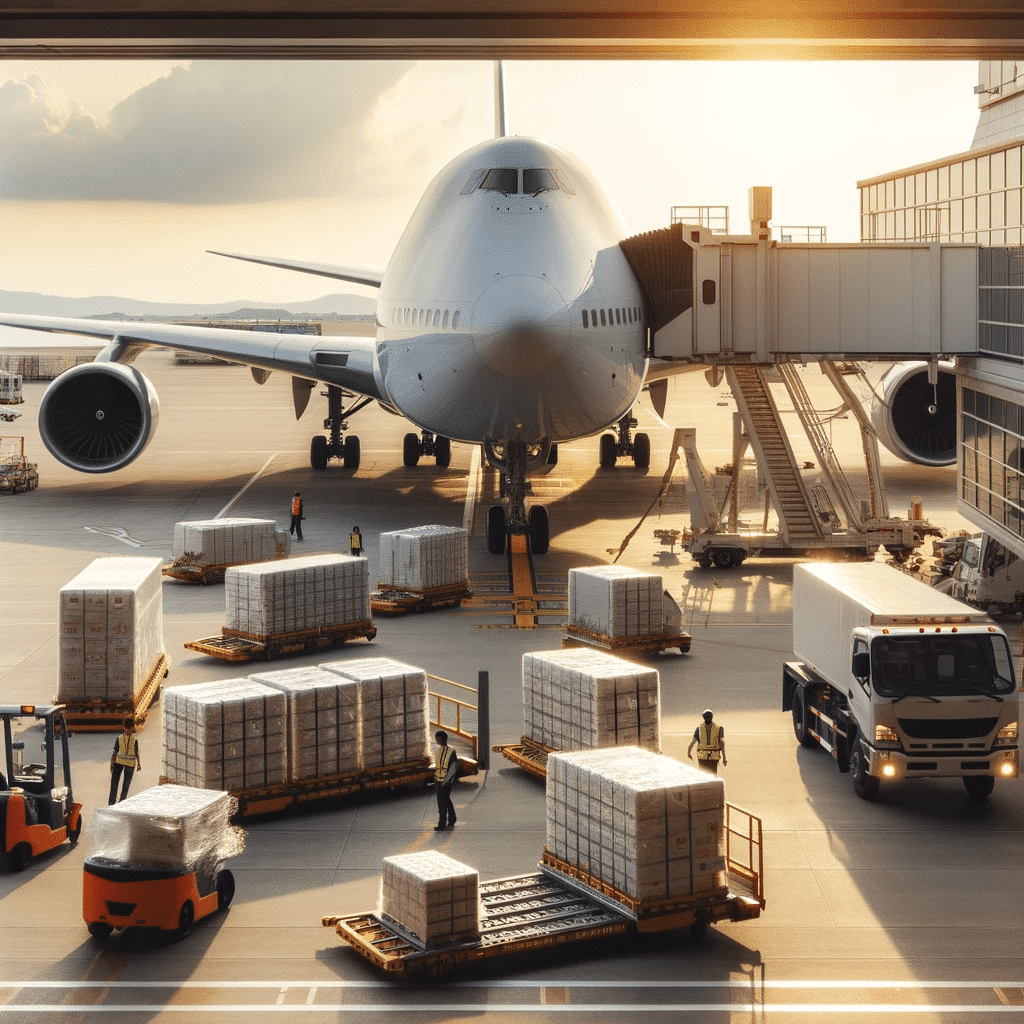
🌐 Nine Categories of Air Freight: Your Guide to Shipping by Air – Inbound Logistics
Transporting goods swiftly, safely, and efficiently is fundamental for numerous companies. Air freight presents a swift and dependable method for distributing products globally. It accounts for 35% of international trade by value, amounting to $6.8 trillion every year.
This guide offers an in-depth look at the various air cargo categories, their applications, and their distinct requirements.
📦 Understanding Air Cargo
Air cargo encompasses the shipment of goods and products using aircraft, either in the cargo holds of passenger planes or in dedicated freight planes. It is a pivotal element of the global logistics network, allowing businesses to expediently and effectively move goods across long distances, ensuring prompt deliveries and global market access.
Thus, air cargo is crucial to modern logistics, playing a key role in the world economy by linking manufacturers, suppliers, and customers globally.
🔍 Exploring Air Cargo Types

✈️ General Cargo
General cargo forms the foundation of the air freight industry, covering a broad spectrum of goods and products. This category includes items ranging from electronics to clothing, machine parts, medical supplies, and more. General cargo comprises items that don’t need special handling or storage conditions during transit.
Various industries, including manufacturing and retail, rely on general cargo air freight for fast and efficient transportation of their products.
🌟 Special Cargo
Special cargo includes items requiring unique handling, storage, or transport conditions. This category encompasses a diverse range of items like fine art, pharmaceuticals, sensitive equipment, and even live stage props for entertainment events.
These items’ special nature calls for extra care and handling, often involving heightened security, temperature controls, or tailor-made containers.
🐾 Live Animals
This category is dedicated to transporting animals by air, ranging from pets and farm animals to exotic species for zoos and conservation projects. They all receive top-level care throughout their journey.
⚠️ Dangerous or Hazardous Cargo
Hazardous cargo encompasses items that could pose risks to health, safety, or property during transit. These goods demand special handling and care to maintain the safety of air cargo staff and aircraft.
Air freight of hazardous materials is under strict control. The IATA’s Dangerous Goods Regulations (DGR) provide global standards for air transport of these materials. This cargo is classified into nine types, each with specific regulations for packaging, labeling, documentation, and handling and storage guidelines:
- Explosives
- Flammable Gases
- Flammable Liquids
- Flammable Solids
- Oxidizing
- Toxic and Infectious
- Radioactive
- Corrosives
- Miscellaneous, including cargo needing elevated temperatures, magnetized materials, and microorganisms.
💎 High-Value or Fragile Cargo
The high-value or fragile cargo category includes items of substantial monetary value or those susceptible to damage during transit. Items such as fine art, luxury items, advanced electronics, sensitive musical instruments, and precious stones or metals all necessitate specialized handling and robust security measures to ensure their safe and secure transportation.
🍓 Perishable Cargo
Perishable cargo, due to its limited shelf life, requires specialized air cargo transport to ensure prompt delivery in optimal condition. This category includes fresh fruits, flowers, meats, seafood, and temperature-sensitive pharmaceuticals.
❄️ Temperature Controlled Cargo
Temperature-controlled cargo is vital for businesses needing precise temperature conditions during transit. This category ensures a consistent environment for temperature-sensitive goods, aiming for perfect condition upon arrival.
✉️ Mail Cargo
The mail cargo segment is integral to the global postal and parcel delivery network, ensuring the timely delivery of letters, documents, and packages. Air freight annually handles about 328 billion letters and 7.4 billion packages, representing the largest share of air shipment loads.
⚰️ Human Remains, Tissue, and Organ Cargo
Air transportation is critical in the sensitive area of human remains, tissue, and organ cargo. This category involves transporting human remains for repatriation or funeral purposes and shipping life-saving tissues and organs for transplants. The sensitive nature of these items necessitates their secure, respectful, and efficient transport.
❓ Frequently Asked Questions
In this Frequently Asked Questions section, we address common queries and provide insights into regulations, accessibility of air cargo services for individuals and small businesses, and the environmental impact of air cargo.
The IATA, the World Customs Organization (WCO), and the Federal Aviation Administration (FAA) are major regulatory bodies. Typically, regulations encompass packaging, documentation, safety, and customs procedures.
📜 Regulations Governing Air Cargo
Air cargo is governed by international and national regulations, varying based on the goods transported and the countries involved.
🔑 Accessibility of Air Cargo for Individuals and Small Businesses
Air cargo services are accessible to individuals and small businesses. Many air cargo companies offer customized solutions for smaller shipments.
🌍 Environmental Impact of Air Cargo
Air cargo, like other transport modes, impacts the environment, primarily through greenhouse gas emissions.
🔚 Concluding Thoughts
Understanding the different types of air cargo is crucial for businesses and individuals planning to ship goods by air. Each category has specific requirements, regulations, and uses, catering to the diverse needs of the global supply chain.
As the air cargo sector continues to evolve, its significance in global trade and logistics remains vital. This article aims to offer valuable insights for those making informed decisions about air shipping, ensuring each shipment’s safe, secure, and timely arrival.





